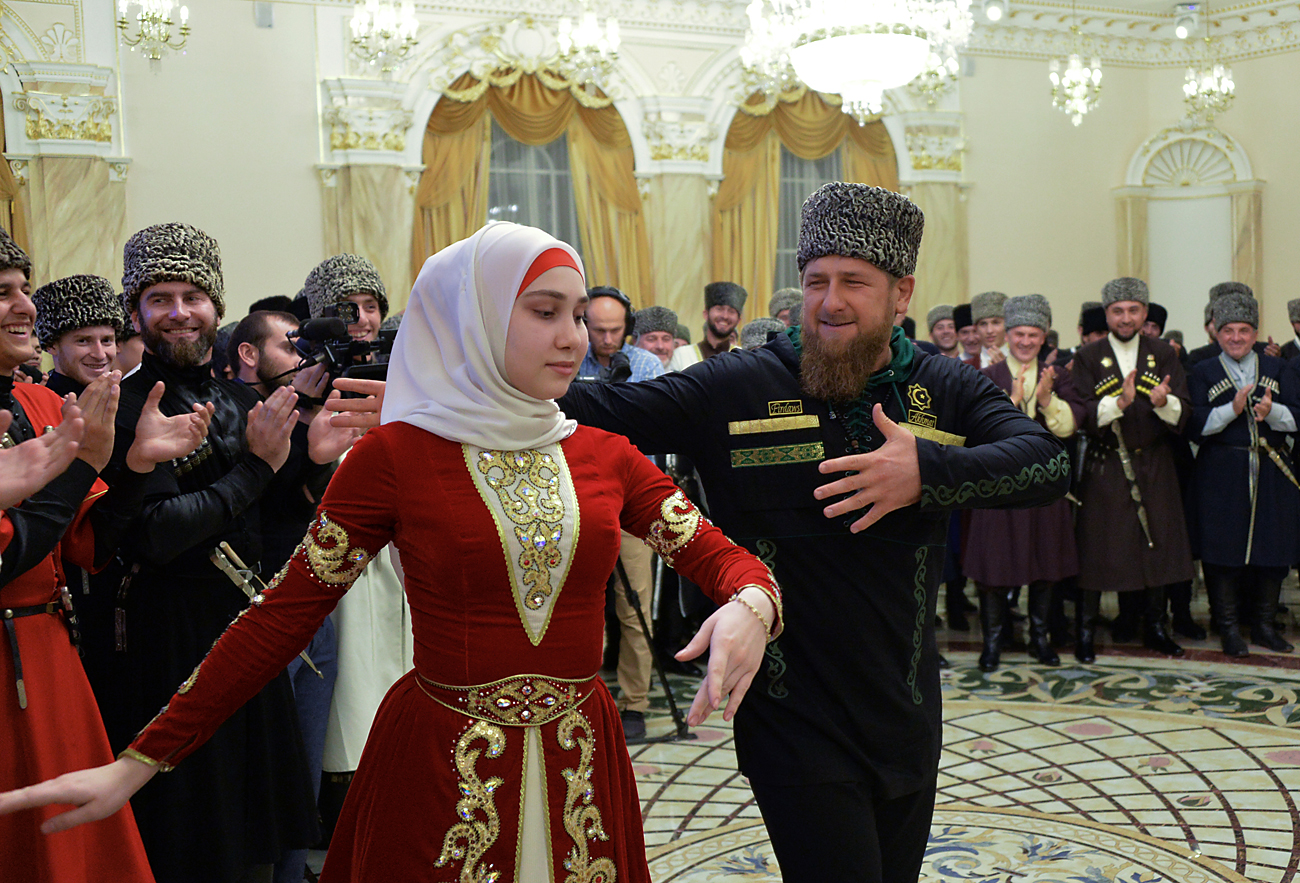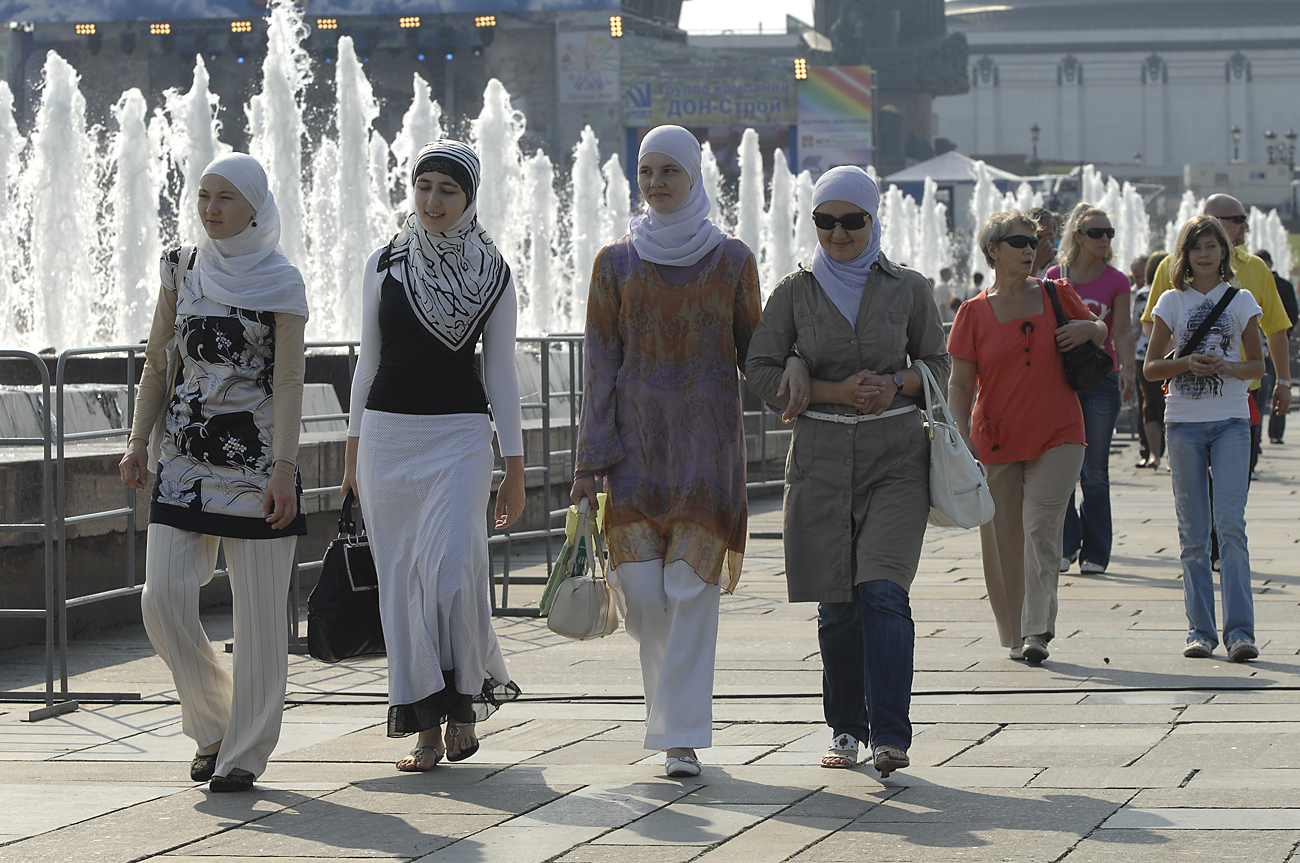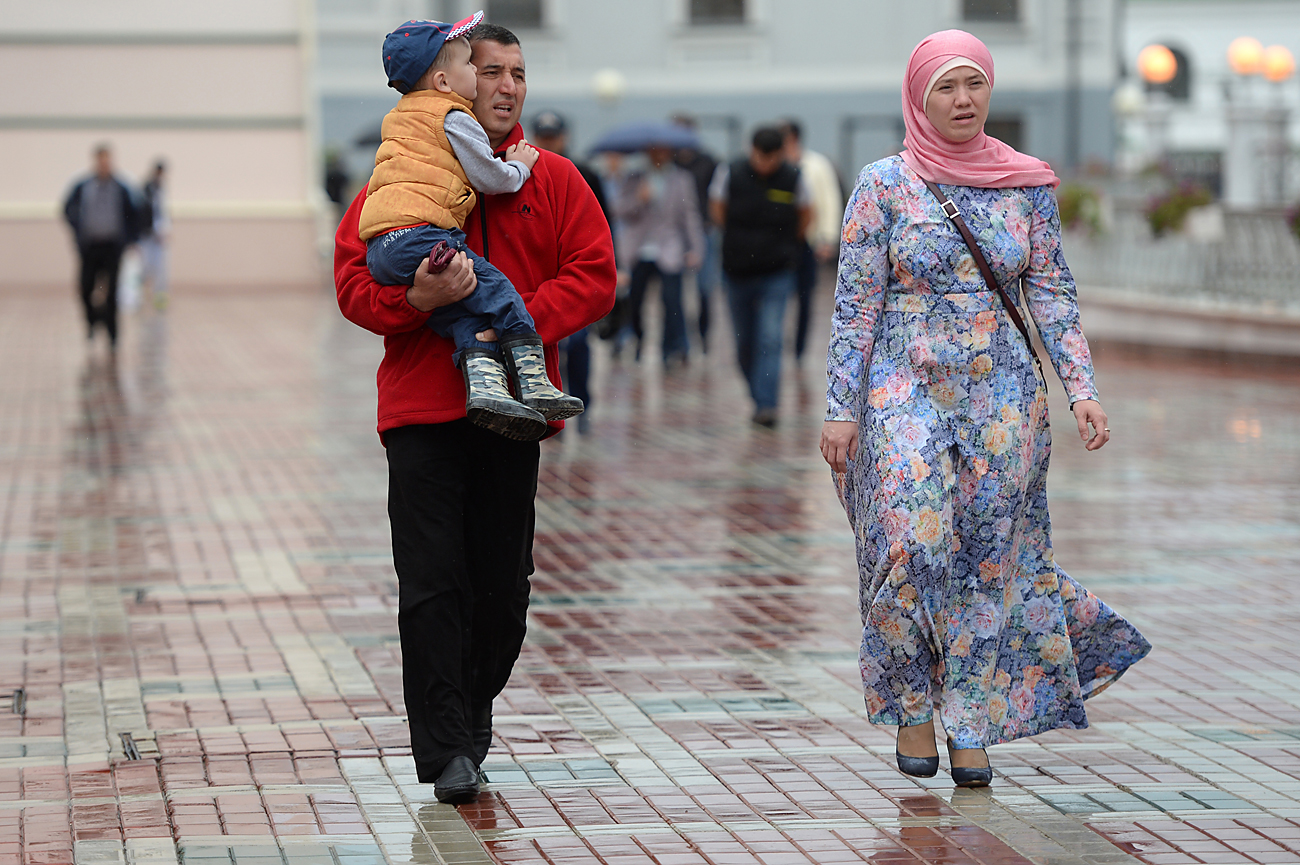Can you wear a hijab in Russia? And if so, where – and where not?

Ramzan Kadyrov during the Chechen Woman Day in Grozny.
Said Tsarnaev/RIA NovostiWhile Muslim women in France are defending their right to wear burkinis, Iranian women have launched a campaign against obligatory headscarves under the slogan “My Stealthy Freedom.” In both cases, women are protesting: the former for the right to wear what they want and the latter, not to wear what is being imposed on them by the country’s laws.
Paradoxical as it may sound, in Russia both these campaigns could unite. According to a report by the American think-tank Pew Research Center, Russia is the only country in the world that has a religious dress code for women that at once prescribes and proscribes certain items of clothing.
 Moscowites celebrate the Day of the City at Poklonnaya Gora / Source: Yuri Mashkov/TASS
Moscowites celebrate the Day of the City at Poklonnaya Gora / Source: Yuri Mashkov/TASS
Dress code for Chechen women
The Republic of Chechnya is the only Russian region where women are forced, or rather, strongly encouraged, to wear headscarves. There are no local laws that prescribe headscarves and, as far as the law is concerned, Chechen women can wear whatever they like. However, in reality for many years already this predominantly Muslim republic in the Russian North Caucasus has been enforcing a dress code for women.
“Over the past decade, Chechnya has been actively enforcing conservative norms of behavior and dress. Originally they were initiated by the local authorities but they do enjoy wide public support,” says Vladimir Sevrinovsky, a Russian expert on the Caucasus and author of a guidebook to the region’s capital Grozny.
The dress code first began to be imposed in 2006. Back then, Chechen leader Ramzan Kadyrov, who at the time held the post of the republic’s prime minister, publicly stated that Chechen women should not be seen with their hair not covered by a scarf. By 2008, headscarves had become a must for female civil servants, public sector employees and teachers. Furthermore, women are not allowed to enter those institutions without a headscarf.
In a number of controversial incidents, Chechen women whose clothes violated Islamic dress code were shot at with paintball guns in attacks carried out by activists with approval from senior Chechen officials. The activists would drive around Grozny and when they spotted young women without a headscarf on or wearing a short skirt, they fired at them with paintball guns from their car windows.
In addition, from time to time campaigns are held in Chechnya urging women to comply with Sharia norms. Early in 2016, a public organization called Iman staged an event in Chechnya under the slogan “Bend to the Creator’s will,” during which activists handed out long dresses and headscarves to female passers-by in Grozny.
That said, says Sevrinovsky, the dress code needs to be enforced only among middle-aged and older women: “Today’s girls are raised in Sharia traditions from the time they start nursery school, so in future the full hijab, which implies not only a headscarf but generally modest clothes, will become an increasingly more common thing,” he said.
…but the hijab is banned in two of Russia’s regions
A completely opposite situation has developed in two other regions of Russia, the Republic of Mordovia and the Stavropol Territory. There, hijabs are banned in schools and universities.
“In the Stavropol Territory in 2013 and in Mordovia in 2014-2015, there was controversy over headscarves in educational establishments,” says Rais Suleymanov, a Russia-based Islamic scholar. “Local school administrations demanded that girls come to schools with their heads uncovered. The girls’ parents and the local Muslim communities protested, however, local education ministry officials and courts alike sided with the view that the dress code in the region should be strictly secular.”
During the scandal in the Stavropol Territory in 2013, Russian President Vladimir Putin was shown on Russian TV channel Perviy Kanal publicly supporting a ban on hijabs.
“There is nothing good about this. There are ethnic features in ethnicity-based republics. However, this is not an ethnic feature but a demonstration of a known attitude to religion. Our country, even its Muslim regions, has never had this tradition,” said Putin. The very same year, the Stavropol Territory banned religious clothing.
As for Mordovia, that case reached the Russian Supreme Court, which in 2015 upheld the requirements for schoolchildren’s dress as set by the government of the Republic of Mordovia.
Liberal Tatarstan
Elsewhere, the predominantly Muslim Republic of Tatarstan is a middle ground that has achieved a compromise that could become an example for the whole of Russia and beyond.
 Muslims outside the Qolsharif Mosque in the Kazan Kremlin, before prayers during Eid al-Fitr holiday that marks the end of the holy month of Ramadan / Source: Maksim Bogodvid/RIA Novosti
Muslims outside the Qolsharif Mosque in the Kazan Kremlin, before prayers during Eid al-Fitr holiday that marks the end of the holy month of Ramadan / Source: Maksim Bogodvid/RIA Novosti
There is no religious dress code for women there. Depending on their religious views, women are free to go out and enter public places either wearing headscarves and long skirts or with their heads uncovered and wearing miniskirts. They are also allowed to be photographed for official documents in headscarves.
In other words, women in Tatarstan enjoy a freedom of choice that both Muslim women in France and their Iranian counterparts can only envy.
Read more: Do Russian women bathe in the burkini?
Subscribe to get the hand picked best stories every week
All rights reserved by Rossiyskaya Gazeta.
Subscribe
to our newsletter!
Get the week's best stories straight to your inbox

